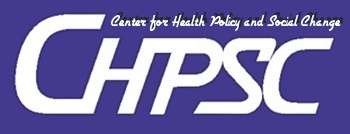share this post
Poverty and marginalization increased the opportunity of Internally Displaced Persons (IDP) to obtain late access to health services, resulted in their susceptibility to the resurgence and persistence of Tuberculosis (TB). The role of government health services was as important as private health services in the treatment of TB. Because both parties often use the same practitioners and equipment, in Indonesia the difference between these services was not very clear. This unique public-private role had both positive as well as negative implications toward access and quality of TB diagnosis.
This research was an observational study using qualitative and quantitative data to describe: the behaviour of TB patients for seeking treatment and the influence of social, economic, and political factors; the factors that influence the process of IDP resilience; the role of private health facilities to control TB. The samples of the research were TB suspects (IDP and non-IDP) and also the stakeholders, that was, private and government medical staffs (doctors, nurses and midwives), non-government organizations (NGO), and staffs and pharmacies in the districts of Sampang and Bangkalan.
Though both IDP and non IDP community were poor, this research indicated there were many issues that made the IDP more susceptible toward the persistence of TB. Among these issues were long-term unhealthy living conditions, a chronic lack of nutrition, and powerlessness. Access to modern health treatment was hampered by belief that the disease was caused by mystical effort of others, dissatisfaction toward health treatment because they felt that they did not recover soon, the limited money to get treatment, and a desire to recover soon after taking medicine. The pattern of TB patients’ behaviour for seeking treatment was inconsistent indicated by the changing pattern of treatment from one health facility to another. The factors that influence this behaviour were low satisfactionand trust in health service facilities previously visited, strong will to recover, along with the cost. The motivation to find a practical treatment in this trial and error way made the role of the dukun (traditional healer) dominant. The main problems for TB prevention were low adherence and discontinuation of treatment encouraged by inadequate quantity of anti-tuberculosis medicine (OAT) purchased at pharmacies without prescriptions; the amount of medicine not equivalent with the prescription; and the OAT not taken regularly. The social, economic, cultural, and geographic factors that influence this condition were: individual characteristics; health facilities; socio-demographic conditions; level of education; knowledge and belief of community towards TB; and also relationships and social structure of the patients’ surrounding.
The mechanism of IDP resilience toward TB was adaptation, non-surrender, a positive view of the problem, and raising future hope. The six protective factors to support this process were: a positive living attitude; a strong belief in God; a tight family bond; interaction and solidarity between IDP; a health system and the Maduranese cultural values.
The importance role of the private health services could be seen from the high number of visits because the quality was considered more highly valued, better quality and more accessible. The optimal role of these services was hampered by a lack of knowledge and the low capability to care for the TB patients (especially by midwives and nurses), and also by the limited support facilities. The role of private pharmacies was as important as the private health services, but the policy of OAT purchased with prescriptions was still varied. Moreover, the minimal knowledge of pharmacy staffs regarded TB especially about OAT and the strategy of the Direct Observed Treatment Shortcourse (DOTS), opened the way for the potential persistence of TB.
Cooperation between government and private parties to control TB need reform because each party was still seen to go its own way. The positive response of private practitioners to distribute the government subsidy of OAT need to be taken seriously by eliminating the procedural obstacles. Because of the geographical obstacles, the facilities and infrastructure, and also the capability of staff to examine sputum three times in a valid way, then the discovery of bacillus resistant acid (BTA (+)) in diagnostic microscopes as the only indication of OAT distribution need to be reconsidered. Three things that could be carried out were: increase the capability of health staffs to examine sputum by ongoing and periodic training; discover another valid and efficient diagnosis technology or modify sputum test procedures to make it easier for health practitioners in the villages; or arrange an easier applied standard of TB diagnosis for remoted villages/areas. The ease of diagnostic procedure would increase access to OAT that was subsidized by government. The government may involve the private sector to help overcome the limited repatriation funds for IDP. The socialization to community of the local government rules in a direct and intense way would eliminate feelings of suspicion and worry, so that the IDP would not be rejected when they return to Kalimantan. The provision of financial capital and life-skills that could be relied on in the future need to be considered as an empowerment program for IDP who did not wish to return.























Comments :
Post a Comment